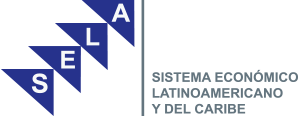ECLAC: REGION'S COUNTRIES MUST STRENGTHEN INSTITUTIONS IN ORDER TO MAXIMIZE THE CONTRIBUTION OF NATURAL RESOURCES TO DEVELOPMENT
30 mayo 2013
Fuente: Taken from ECLAC Website
Fuente: Taken from ECLAC Website
Santiago, May 30- According to a new ECLAC document, Latin American countries must review and strengthen the institutions and instruments in order to maximize the contribution of natural resources to regional development, particularly in the current cycle of high prices.
The report Natural resources within the Union of South American Nations: Status and trends for a regional development agenda was presented by Antonio Prado, Deputy Executive Secretary of this United Nations regional commission, at the Conference of the Union of South American Nations on Natural Resources and Integral Development in the Region, held until 30 May in Caracas, Venezuela.
In the document, ECLAC analyses the issue of natural resource governance in the region, which refers to the set of sovereign policies over ownership and allotment of natural resources and the distribution of productivity gains arising from their exploitation.
Latin America and the Caribbean has 65% of the world's reserves in lithium, 42% of silver, 38% of copper, 33% of tin, 21% of iron, 18% of bauxite and 14% of nickel. It also has large oil reserves: a third of world bioethanol production, almost 25% of biofuels and 13% of oil.
The region has around 30% of the world's total renewable water resources, which represents over 70% of the water throughout the Americas, as well as having 21% of the planet's forests and plentiful biodiversity.
However, the region has major weaknesses, such as production and export structures based on static comparative advantages (based on natural resources alone) rather than dynamic competitive advantages; low investment in infrastructure, exploration and value added; and poor performance in innovation, science and technology.
According to Antonio Prado "Historically, the region has been unable to translate the boom periods of exporting its resources into long-term economic development processes. The challenge for the countries of the region is to generate and efficiently invest extraordinary revenue from the current price cycle with social and environmental sustainability".
In the new report, ECLAC describes the various legal and economic instruments that Latin American and Caribbean States have at their disposal to appropriate and distribute the revenues from the exploitation of natural resources relating to mining, water and hydrocarbons.
In terms of mining, ECLAC states that four UNASUR countries (Argentina, Brazil, Chile and Peru) receive 62% of regional investment in exploration (and according to 2010 data the percentage climbs to 84% if Mexico is added).
In 2011, Brazil, Chile and Peru were among the top 10 recipients of mining investment, accounting for 36% of the world total (compared to 26% in 2000).
Between 2000 and 2010, the region's oil exports did not follow the upward trend of prices, unlike the pattern in the rest of the world. Despite this, estimated income of the hydrocarbons sector during the boom of 2004-2009 (7.1% of GDP) was double the average recorded between 1990 and 2003 (3.6% of GDP).
ECLAC also states that UNASUR has a primary energy supply structure that is cleaner than the world average (31% compared with 12%), as it combines energy sources such as hydroelectricity, biomass and other renewables. In 2011, for instance, hydroelectricity represented 11% of these countries' total primary energy supply (which is much higher than the world figure of 2%).
The Commission describes the region as facing the challenge of achieving homogenization and integration in energy consumption, with a view to narrowing the subregional divides that still persist, namely: the heterogeneity of natural resources, supply structures and energy consumption, and the need to achieve institutional consolidation and establish the basic conditions for renewable energy promotion and penetration policies.
According to ECLAC, the subregion's public policies should take a long-term view on the need to ensure efficient investment of the windfall earnings from natural resources now that prices are buoyant, as well as on the need to improve public management of socioenvironmental conflicts that arise in the development of natural resource sectors.








